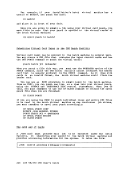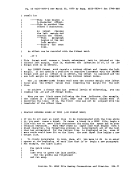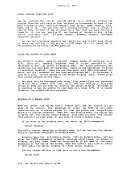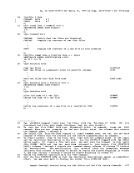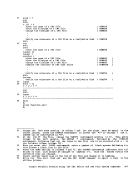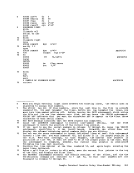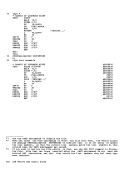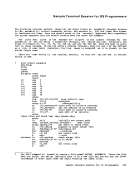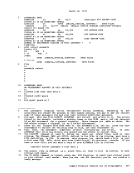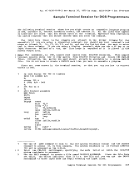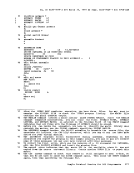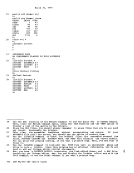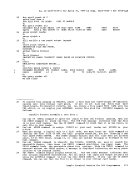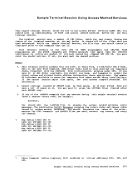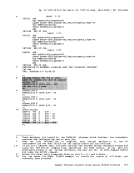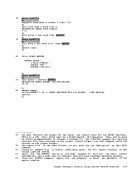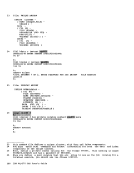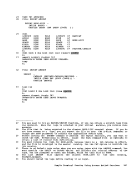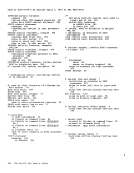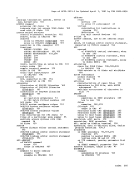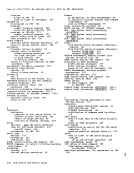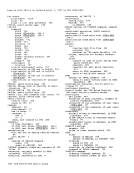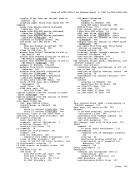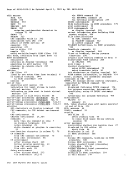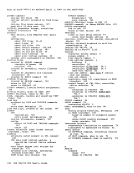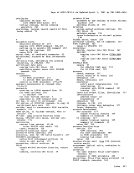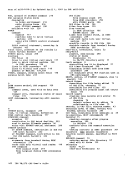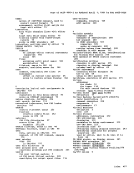April 27, 1981 CMS MACROS FOR TERMINAL COMMUNICATIONS There are four CMS macros you can use to write interactive,
terminal-oriented programs. They are RDTERM,WRTERM, LINEDIT, and PAITT. RDTERM and WRTERM only require a read/write buffer for sending and rece1v1ng lines from the terminal. The third, LINEDIT, has a
substitution and translation capability.When you use the WRTERM macro to write a line to your terminal you
canspecify the actual text line in the macro instruction, for example: DISPLAY WRTERM 'GOOD MORNING' You can al30 specify the message text by referri.ng to a buffer that
contains the message.
TheRDTERM macro accepts a line from the terminal and reads it into a
buffer you specify.You could use the RDTERM and WRTERM macros together,
as follows:WRITE READ REWRITE BUFFER WRTERM 'ENTER LINE'
RDTERMBUFFER LR 3,0 WRTERM BUFFER, (3)
DSCL130 In this example, the WRTERM macro results in a prompting message. Then
the RDTERM macro accepts a line from the terminal and places it in the
bufferBUFFER. The length of the line read, contained in register 0 on
return from the RDTERM macro, is saved in register 3.When you specify
a buffer address on theWRTERM macro instruction, you must specify the
length of the line to be written. Here, register notation is used to
indicate that the length is contained in register 3.
The LINEDIT macro converts decimal and hexadecimal data intoEBCDIC, and places the converted value into a specified field in an output line.
There are list and execute forms of the macro instruction, which you can
use in writing reentrant code. Another optionallows you to write lines
to the offline printer. The LINEDIT macrois described, with examples,
inCMS AnS Macro Reference. Figure 21 shows how you
miqht use the LINEDIT macro to convert and displayCMS return codes.
TheWAITT (wait terminal) macro instruction can help you to
synchronize input and output to the terminal. If you are executing a
program that reads and writes tothe·terminal frequently, you may want
to issue aWAITT macro instruction to halt execution of the program
until all terminalI/O has completed. CMS MACROS FOR UNIT RECORD AND TAPE I/O CMS provides macros to simplify reading and punching cards (RDCARD and PUNCHC), and creating printer files (PRINTL). When you use either the PUNCHC or PRINTL macros to write or punch output files while a program
is executing,you should remember to issue a CLOSE command for your
virtual printer or punch when you are finished.You can do this either
after your proqram returns control toCMS, by entering: 250 IBM VM/370 CMS User's Guide
terminal-oriented programs. They are RDTERM,
substitution and translation capability.
can
contains the message.
The
buffer you specify.
as follows:
RDTERM
DS
the RDTERM macro accepts a line from the terminal and places it in the
buffer
return from the RDTERM macro, is saved in register 3.
a buffer address on the
length of the line to be written. Here, register notation is used to
indicate that the length is contained in register 3.
The LINEDIT macro converts decimal and hexadecimal data into
There are list and execute forms of the macro instruction, which you can
use in writing reentrant code. Another option
to the offline printer. The LINEDIT macro
in
miqht use the LINEDIT macro to convert and display
The
synchronize input and output to the terminal. If you are executing a
program that reads and writes to
to issue a
until all terminal
is executing,
virtual printer or punch when you are finished.
after your proqram returns control to

































































































































































































































































































